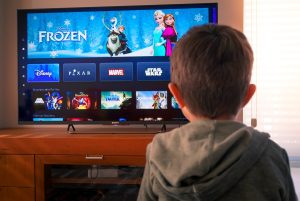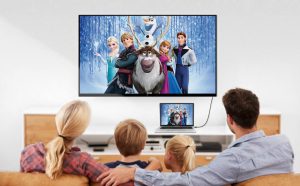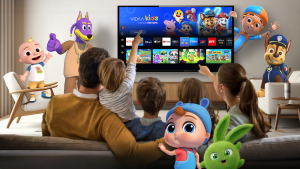Introduction
The digital age has revolutionized the way children consume entertainment. With the advent of streaming services, the landscape of children’s entertainment has undergone a significant transformation. This article explores how streaming is affecting children’s entertainment choices, examining the implications for content consumption, viewing habits, and the broader cultural impact.
The Rise of Streaming Services

Streaming services such as Netflix, Disney+, Amazon Prime Video, and YouTube have become household staples, offering vast libraries of content accessible at any time. Unlike traditional TV, which operates on fixed schedules, streaming platforms provide on-demand access, allowing children to watch their favorite shows and movies whenever they want.
Key Features of Streaming Services
1. On-Demand Viewing: Children can watch their favorite shows and movies at their convenience, leading to a more personalized viewing experience.
2. Content Variety: Streaming platforms offer a diverse range of content, from classic cartoons to educational programs, catering to various interests and age groups.
3. Parental Controls: Many streaming services include features that allow parents to monitor and restrict what their children can watch, ensuring age-appropriate content consumption.
Streaming’s Impact on Attention Span
One of the concerns with streaming services is the potential impact on children’s attention spans. With the option to quickly skip to the next episode or switch shows instantly, children may struggle with staying focused on one program for a long time. This constant ability to jump between shows might lead to a shorter attention span as children become used to fast-paced, easily accessible content.
Binge-Watching Culture
The rise of binge-watching is another byproduct of streaming. With entire seasons of shows available at once, children often watch multiple episodes in one sitting. While this can be exciting and fun, it also raises concerns about how much time kids spend watching TV in a single session. Binge-watching can lead to longer screen time, affecting their daily routines, physical activity, and even sleep.
Changing Viewing Habits

The shift from traditional TV to streaming has led to notable changes in children’s viewing habits.
-
Binge-Watching Culture
One of the most significant changes is the rise of binge-watching. Streaming services often release entire seasons of shows at once, enabling children to watch multiple episodes in one sitting. This binge-watching culture contrasts with the traditional model of waiting a week for the next episode.
-
Personalized Recommendations
Streaming platforms use algorithms to recommend content based on viewing history. For children, this means they are more likely to discover new shows and movies that align with their interests, further personalizing their entertainment experience.
-
Multi-Device Access
Children today have access to streaming content on various devices, including tablets, smartphones, and smart TVs. This multi-device access allows for greater flexibility in where and how children consume entertainment, whether at home, in the car, or on the go.
The Role of Algorithms
Streaming services use algorithms to recommend shows based on a child’s viewing history. While this personalized approach helps kids find content they enjoy, it can also limit their exposure to different types of programs. If children are only shown content similar to what they’ve already watched, they might miss out on discovering new genres or educational materials.
Increased Screen Time
Streaming’s convenience has led to concerns about increased screen time. With endless content available at their fingertips, children can easily spend hours watching videos, which can affect their physical health, sleep, and social interaction. Parents need to monitor and set boundaries on screen time to prevent excessive usage.
Variety of Content Available
One of the biggest advantages of streaming is the sheer variety of content available. Children now have access to a vast range of shows, movies, and educational programs across different genres. Platforms like Netflix, Disney+, and YouTube Kids offer everything from animated series to documentaries, giving kids the opportunity to explore new interests and learn from what they watch.
Impact on Content Creation

The demand for streaming content has also influenced the creation of children’s entertainment.
-
Original Programming
Streaming services are investing heavily in original programming, producing exclusive shows and movies that are not available on traditional TV. This has led to a surge in high-quality, innovative content designed specifically for young audiences.
-
Educational Content
Many streaming platforms are prioritizing educational content, recognizing the role of entertainment in learning. Shows that combine fun with educational value are becoming increasingly popular, offering parents a way to engage their children in constructive viewing.
-
Diverse Representation
Streaming services are more likely to feature diverse characters and storylines, reflecting a broader range of experiences and backgrounds. This inclusivity helps children see themselves represented on screen and promotes empathy and understanding of different cultures and perspectives.
Balancing Entertainment and Education
While streaming platforms have a wide selection of educational content, entertainment-focused shows tend to dominate children’s viewing habits. Parents play a critical role in guiding their kids towards more enriching content, balancing entertainment with learning. By actively participating in their children’s viewing choices, parents can help them explore educational programs that make learning fun.
Social Isolation from Individual Viewing
Streaming platforms often encourage individual viewing, especially since children can watch shows on personal devices like tablets or smartphones. This can lead to less family time spent watching shows together, which was more common with traditional television. Individual viewing experience can reduce shared entertainment moments within families, potentially leading to a more isolated media consumption experience.
Parental Concerns and Considerations

While streaming offers numerous benefits, it also raises several concerns for parents.
-
Screen Time Management
One of the primary concerns is managing screen time. With the endless availability of content, children can easily spend excessive amounts of time watching shows and movies. Parents need to establish boundaries and encourage a balanced lifestyle that includes physical activity and other forms of play.
-
Content Appropriateness
Despite the availability of parental controls, there is always the risk of children accessing inappropriate content. Parents must stay vigilant and regularly review what their children are watching to ensure it aligns with their values and expectations.
-
Advertising and Consumerism
Some streaming platforms, particularly free services like YouTube, include advertisements that may not always be suitable for children. Additionally, the prevalence of branded content and product placements can encourage consumerism. Parents should educate their children about the nature of advertising and help them develop critical viewing skills.
The Decline of Traditional TV
As streaming platforms become more popular, traditional TV has seen a decline in viewership, especially among younger audiences. Children are no longer bound by scheduled programming or commercials, which has made traditional television less appealing. This shift signals a major change in how future generations will consume media, favoring on-demand services over traditional broadcasting.
Advertising and Consumerism
Unlike traditional TV, which had regulated commercial breaks, many streaming services offer ad-free experiences or targeted ads that appear based on the child’s viewing habits. While this can be beneficial in reducing exposure to irrelevant content, it also raises concerns about how advertising might shape children’s preferences and behaviors. The focus on personalized ads can influence children’s interests and desires, promoting consumerism at a young age.
The Future of Children’s Entertainment

As streaming continues to evolve, it will undoubtedly shape the future of children’s entertainment in new and exciting ways.
-
Interactive Content
Interactive content, where viewers can influence the storyline through choices, is gaining traction. This format offers a more engaging and immersive experience, encouraging children to think critically and make decisions.
-
Virtual Reality (VR) and Augmented Reality (AR)
Emerging technologies like VR and AR have the potential to revolutionize children’s entertainment by offering immersive, interactive experiences that go beyond traditional viewing. These technologies can create new opportunities for learning and exploration.
-
Global Content Access
Streaming services have made it easier for children to access content from around the world. This global access exposes children to different cultures and languages, promoting a more interconnected and inclusive worldview.
Analysis Table: How Streaming Impacts Children’s Entertainment Choices
| Aspect | Impact of Streaming |
| Content Availability | Vast and diverse, from cartoons to educational shows. |
| Viewing Habits | On-demand culture leads to binge-watching and personalized viewing. |
| Content Discovery | Algorithms heavily influence choices, sometimes limiting diversity. |
| Parental Control | Available but underutilized by some parents. |
| Educational Value | Increased access to educational shows, but entertainment often overshadows learning. |
| Screen Time | Potential for overuse due to ease of access and lack of scheduling. |
Comparative Table: Traditional TV vs. Streaming
| Factor | Traditional TV | Streaming Services |
| Viewing Schedule | Fixed schedules, no control over timing | On-demand, full control over when to watch |
| Content Variety | Limited to what is aired | Extensive libraries with content across various genres |
| Parental Control | Limited to channel blocking | Advanced parental control features |
| Discovery of New Content | Programmed shows with limited input | Algorithm-driven recommendations |
| Social Viewing | More likely to be a shared family activity | More individualistic viewing experience |
| Binge-Watching | Not possible | Encourages binge-watching entire series |
Conclusion
Streaming has undeniably transformed children’s entertainment choices, offering greater flexibility, variety, and personalization. While this shift brings numerous benefits, it also presents challenges that parents must navigate to ensure a balanced and healthy viewing experience for their children. As technology continues to advance, the future of children’s entertainment promises to be dynamic and ever-evolving, with streaming at the forefront of this exciting journey.











